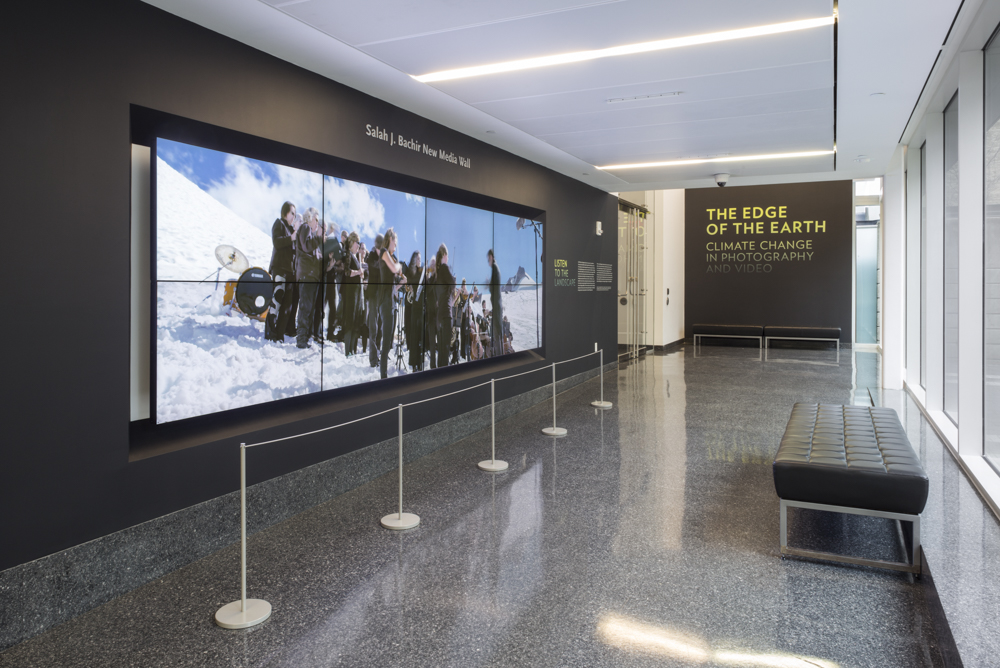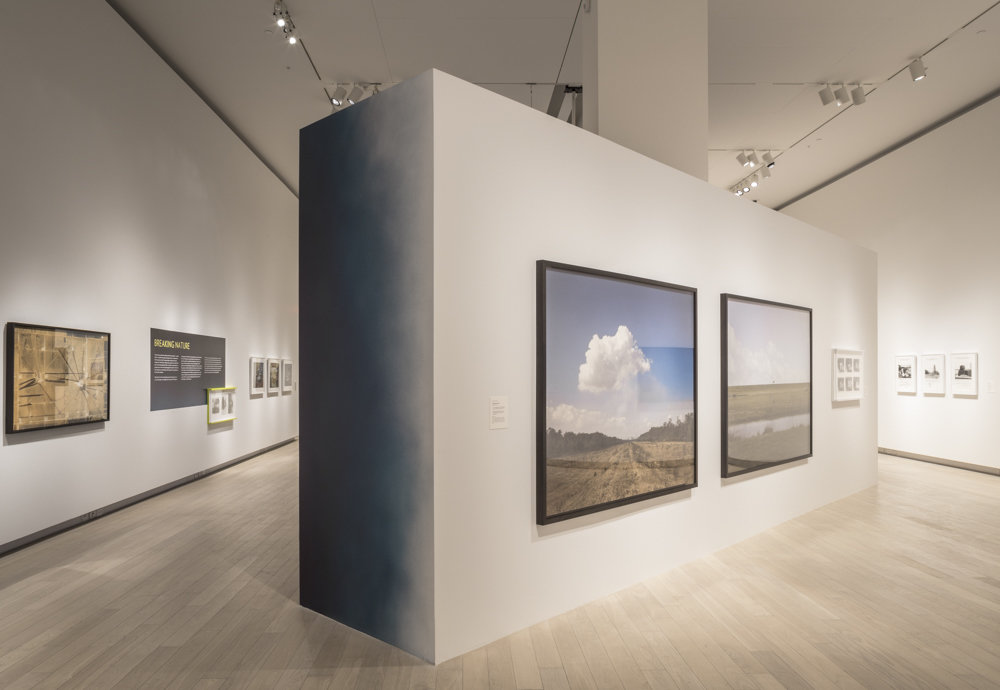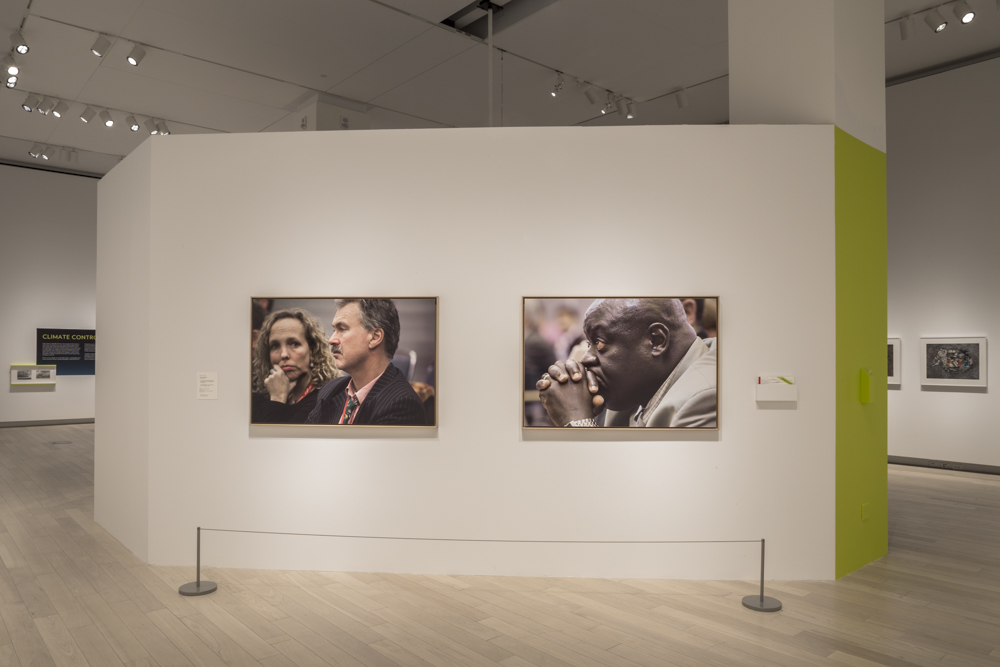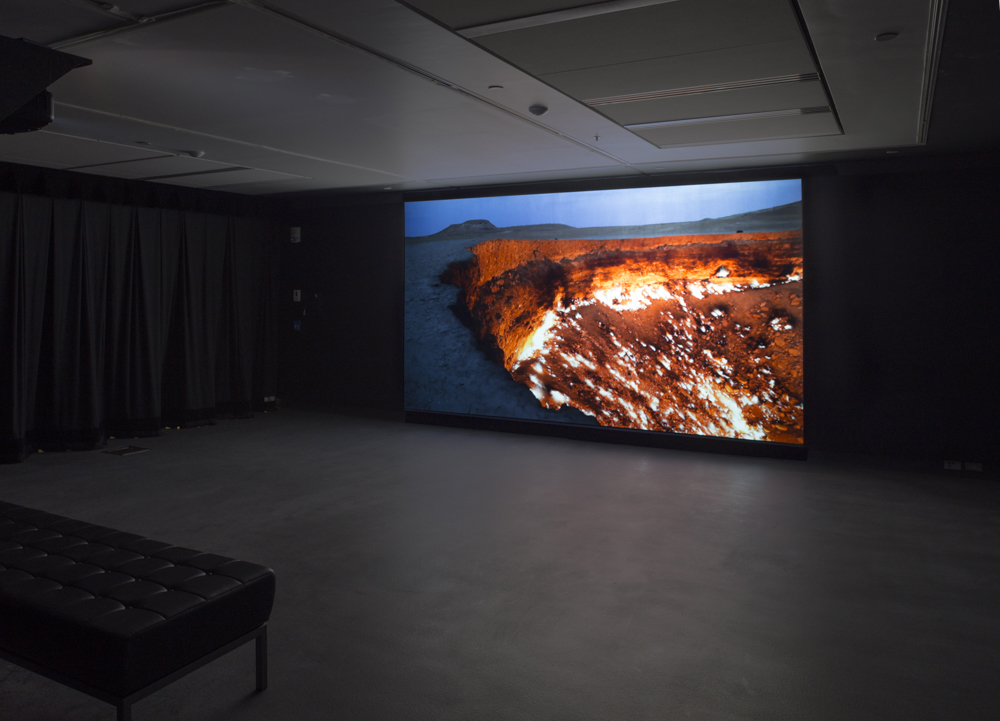 Installation view of Paul Walde’s Listen to the Landscape, as part of The Edge of the Earth: Climate Change in Photography and Video,2016 © Riley Snelling, Ryerson Image Centre
Installation view of Paul Walde’s Listen to the Landscape, as part of The Edge of the Earth: Climate Change in Photography and Video,2016 © Riley Snelling, Ryerson Image Centre
Ryerson Image Centre’s latest curatorial effort, simply titled Climate Change, confronts many ecological concerns head on, displaying its socially conscious inclinations for all to witness.
 The Edge of the Earth: Climate Change in Photography and Video (installation view), Listen to the Landscape, 2016 © Riley Snelling, Ryerson Image Centre
The Edge of the Earth: Climate Change in Photography and Video (installation view), Listen to the Landscape, 2016 © Riley Snelling, Ryerson Image Centre
This multi-media affair is comprised mainly of photographic images, both still and moving. Owing itself to practices in new-media, which is heavily influenced by advancements in technological processes and image viewing, Climate Change reveals itself in a contemporary visual vernacular. The exhibition is experienced in two succinct halves; the mausoleum-like stillness of its photographic components, and the more mobile, yet hauntingly bare video efforts. Photography is mainly comprised of still frames capturing recent environmental traumas, and the effects their wreckage have left on civilians globally. When shown, the human physiognomy is solemn and bodies appear defeated, bringing a more localized and identifiable element to national news stories and scientific statistics. Photography is used as a slice-of-life form of portraiture, aiming to authentically capture experiences of distress. On the other hand, the video contributions reveal how certain technologies interact, or interfere, with nature, as an oilrig is endlessly looped to demonstrate its ecological interruption.
 Installation view of work by Joel Sternfeld, from the series When It Changed, as part of The Edge of the Earth: Climate Change in Photography and Video, 2016 © Riley Snelling, Ryerson Image Centre
Installation view of work by Joel Sternfeld, from the series When It Changed, as part of The Edge of the Earth: Climate Change in Photography and Video, 2016 © Riley Snelling, Ryerson Image Centre
 The Edge of the Earth: Climate Change in Photography and Video (installation view), 2016 © Riley Snelling, Ryerson Image Centre
The Edge of the Earth: Climate Change in Photography and Video (installation view), 2016 © Riley Snelling, Ryerson Image Centre
While this exhibition is full of more current anxieties towards the fearful reality of climate change, at times its curatorial reach harkens back to mid-century modernism as a thematic precursor. A photographic inclusion from Robert Rauschenberg sits neatly within the selection of present-day artistic efforts that dominates Climate Change, displaying a more in-depth and thoughtful analysis of historical trends in environmentally motivated art even in its unintentional infancy. However, as history progressed, and artistic practice moved to more direct contact between creator and subject matter, land art has seen its early entropic associations expand and prevail into newer, more alarming territory. Activism has now helped nuance images of natural phenomena into indexes of greater universal trepidations.
 Hicham Berrada, Celeste, 2014. Still image from HD Video. Courtesy of the artist and kamel mennour, Paris. The Edge of the Earth: Climate Change in Photography and Video, 2016, Ryerson Image Centre
Hicham Berrada, Celeste, 2014. Still image from HD Video. Courtesy of the artist and kamel mennour, Paris. The Edge of the Earth: Climate Change in Photography and Video, 2016, Ryerson Image Centre
 Installation view of Adrien Missika’s Darvaza, as part of The Edge of the Earth: Climate Change in Photography and Video, 2016 © Riley Snelling, Ryerson Image Centre
Installation view of Adrien Missika’s Darvaza, as part of The Edge of the Earth: Climate Change in Photography and Video, 2016 © Riley Snelling, Ryerson Image Centre
With Climate Change, the art world is responding to its subject matter in a sincere and bleak manner, relying less on visual metaphor in place of staunch realism, acting as a sort of National Geographic for an apprehensive age.
David Saric
*Exhibition information: September 14 – December 4, 2016, Ryerson Image Centre, 33 Gould Street Toronto. Gallery hours: Tue – Fri, 11 – 6, Wed, 11 – 8, Sat – Sun, 12 – 5 p.m.
